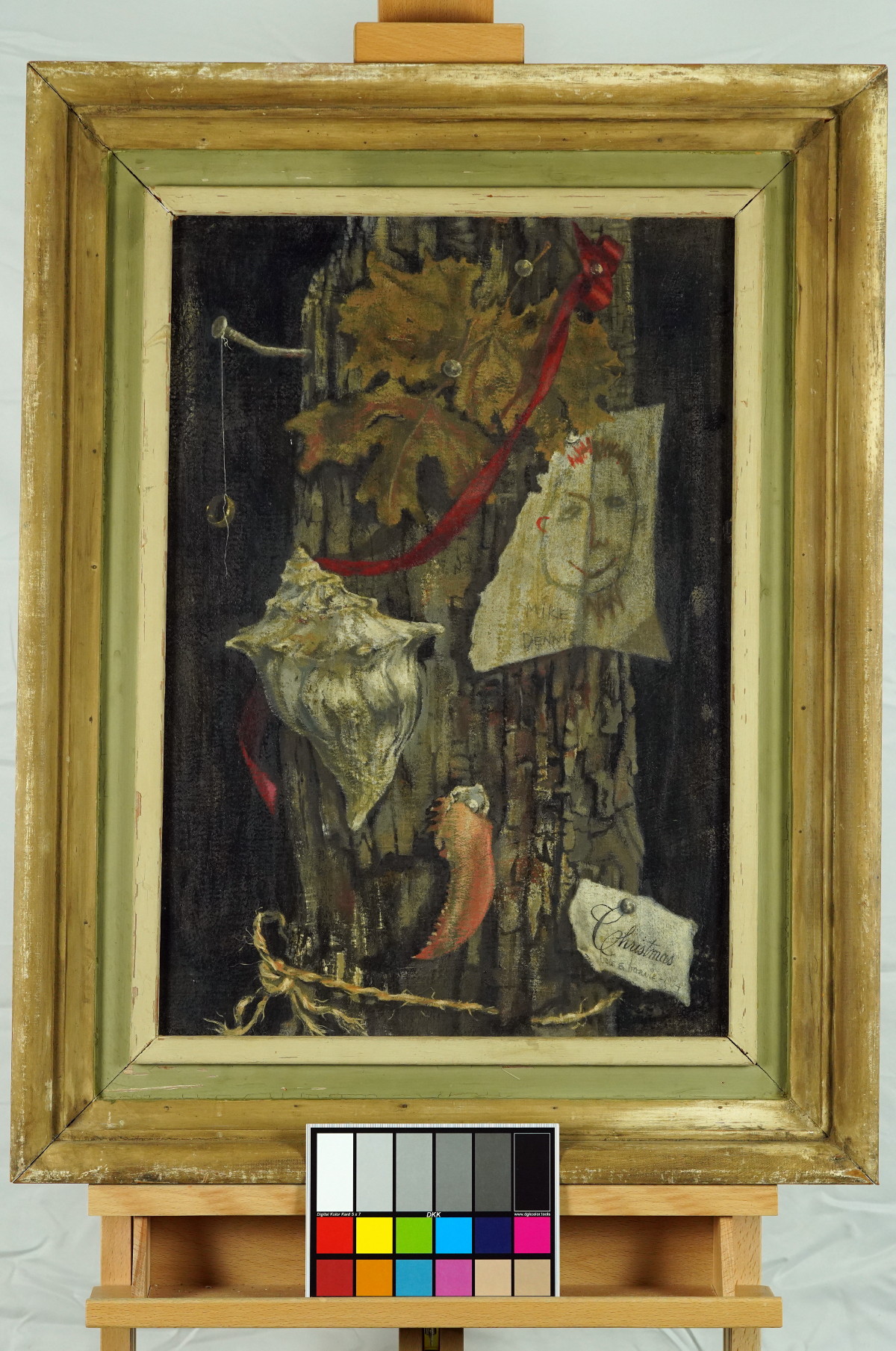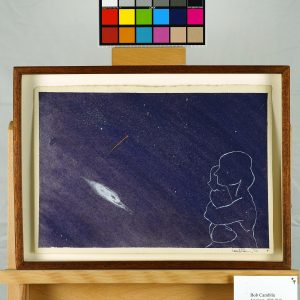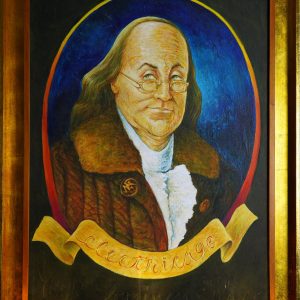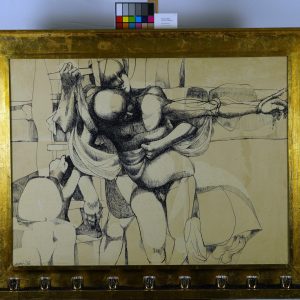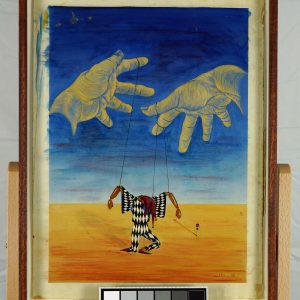Description
christmas, 1954Acrylic on board
Signed
23 x 15.75 (image)
31.25 x 23.75 in. (frame)
original, includes certificate of authenticity from ArtTrust
The painting “Christmas” shows a tree trunk or a wooden surface with various objects attached to it. There’s a mix of natural and man-made items: a seashell, dried leaves, a ribbon, a drawing of a face on a torn piece of paper, and a crab claw. The arrangement resembles a makeshift assemblage of memories or keepsakes pinned to a surface, invoking a sense of nostalgia or personal storytelling.
From a Zen perspective, this artwork can represent the idea of letting go of attachments. The objects pinned to the tree trunk could symbolize memories, desires, or burdens we carry through life. In Zen teachings, enlightenment involves realizing the impermanence of all things and the necessity to release attachments to experience true freedom. The assemblage here serves as a metaphor for the mind cluttered with attachments, suggesting the need to let go and live in the present moment.
In the context of the I Ching, this composition might correspond to Hexagram 23, “Splitting Apart” (剝). This hexagram suggests a time when things are breaking down or being stripped away, much like the worn and weathered surface in the painting. The idea is to understand the natural cycle of accumulation and dissolution. Just as the objects in the artwork are varied and disconnected, life’s circumstances often lead to phases of disintegration before renewal.
Combining the Zen and I Ching interpretations, the image portrays a reflection on the passage of time and the accumulation of experiences. The objects symbolize remnants of a past that one clings to, suggesting a need for release to find spiritual clarity. The weathered wood could symbolize the enduring nature of the self, while the items attached to it reflect transient aspects of life that can become burdensome if not released. It invites viewers to contemplate their own attachments and whether they serve or hinder their journey towards inner peace.
The assemblage style and naturalistic rendering hint at influences from Surrealism and Symbolism, where objects are used symbolically to evoke deeper meanings. The work’s tactile quality recalls collage techniques used by artists like Joseph Cornell or even the assemblage art of Robert Rauschenberg, where found objects are combined to create layers of meaning. The personal nature of the objects suggests autobiographical elements, indicating that the artist may be expressing a personal narrative or inviting the viewer to form their own associations with the items depicted.
This artwork thus functions as a meditation on memory, time, and the process of letting go. It encourages viewers to reflect on what they hold onto and the significance of releasing attachments for spiritual growth.
*Shipping cost will vary, please inquire at sales@camblingallery.com before purchasing.
Currently ships from Oregon, USA
Member of artnet? Apply for a discount! Inquire about intergallery and permanent loans for museums.
“christmas” was featured in his Yes Retrospective
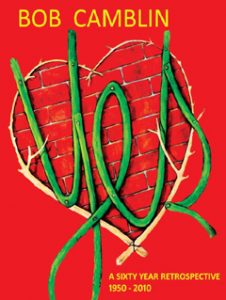
Reproductions of this drawing are available in multiple sizes!
Click here to use our high-resolution viewer!
This artwork is available with a non-fungible token to ensure traceability and transparency of provenance.
The royalty factor – Unlike traditional artworks, such as paintings, mosaics, statues, and the like, NFTs can be programmed to provide royalties to you every time the painting (and token) is sold and resold – for eternity. That mind-bending Camblin you sold could be worth millions one day and provide income for your great-great-great grandkids!
Anti-forgery – The central idea underpinning NFTs is that they are built on the blockchain, which is meant to offer advanced security. Think of it like an un-erasable and un-avoidable copyright.
Easy authentication – Another compelling aspect of NFT art and NFTs in general is the ability to quickly and easily authenticate items, as the record of ownership is scrupulously kept on the blockchain.
